By the time we got to Lake Nakuru during our Kenya Safari, we were itching to see some really big wildlife. We had seen a lot of elephants at Amboseli National Park, but we had yet to see any other of the Big 5 – save for some buffalo up in the distance.
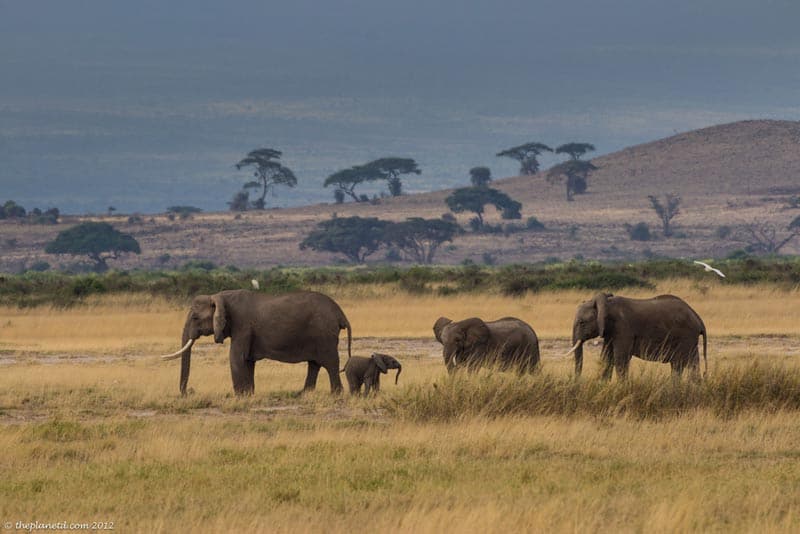
We had visited Kenya after the great migration season had ended and were starting to worry that maybe we travelled all this way without seeing the big game animals of Africa.
Table of Contents
Lake Nakuru, Kenya
Don’t get me wrong, I love elephants. They are majestic and beautiful and I enjoy watching them. It’s just that we’ve been fortunate to have witness a lot of elephants in our travels.
We cycled through Africa along the Elephant Highway in 2008 where we saw our fair share of the king of the giants. We’ve seen Asian elephants in India, Thailand and Sri Lanka. In Kenya’s Amboseli National Park, we saw more herds of elephants than we had seen anywhere in the world.
It is heartening to see so many elephants thriving and surviving, however they still face a very real threat due to poaching and the high demand of ivory in Asian Countries. When will humans ever learn?
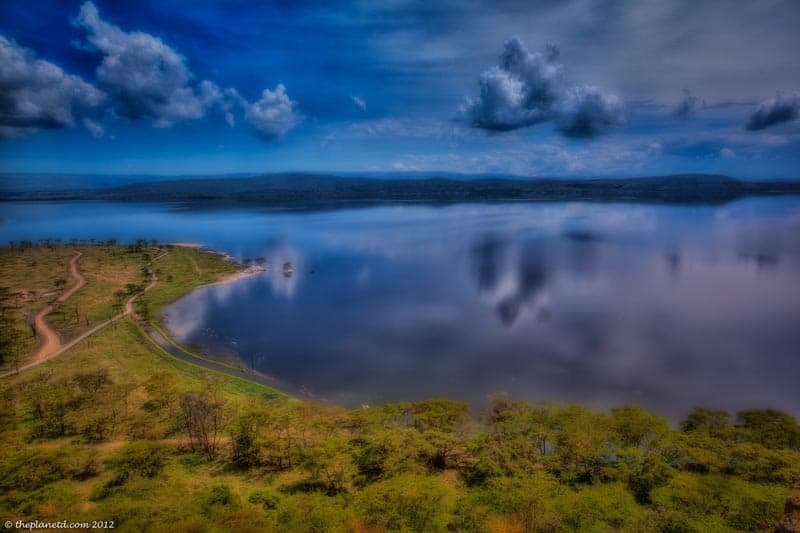
After a very long drive from Amboseli National Park to Lake Nakuru, we were feeling a little down.
We arrived close to sunset and we weren’t in the mood to search for wildlife. After only a short time driving around the lake, we told our guide Makau that we’d like to call it a day and go back to the hotel.
He was a little disappointed in us to say the least, but we went back, regrouped and prepared for the next day of our safari in Kenya.
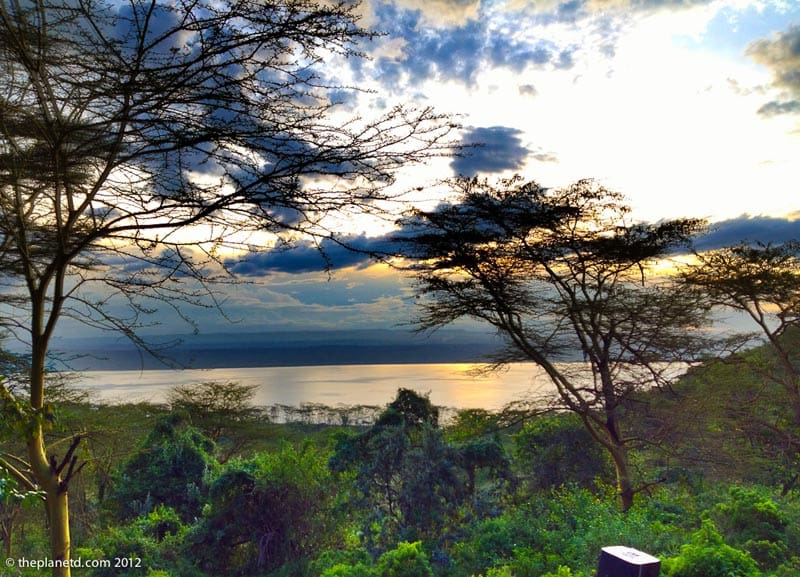
The following morning we awoke before dawn and set out to find the Rhinos and Flamingos of Lake Nakuru.
Wildlife of Lake Nakuru
Lake Nakuru is one of the best places to spot wild rhinos in all of Africa and we were determined to find them.
But first we were greeted by all the wildlife waking up first thing in the morning who were hanging out by the side of the road.
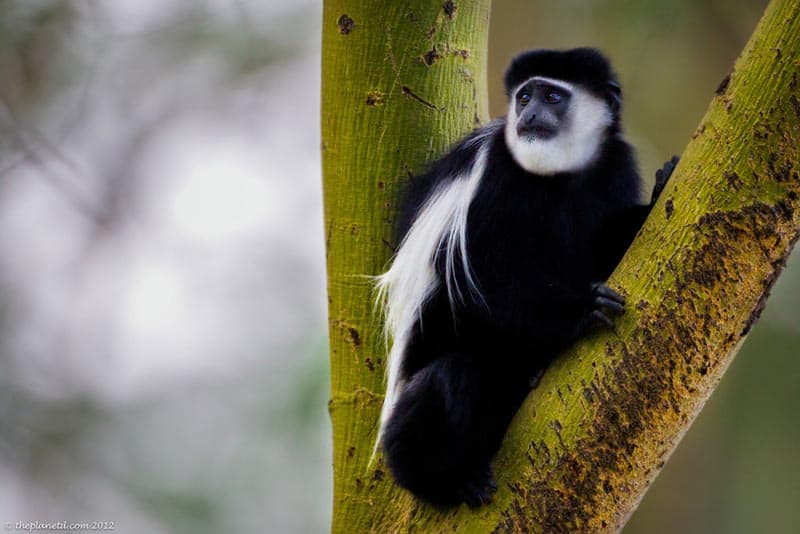
A van whizzed past us as we snapped some photos of monkeys, baboons and zebras on the side of the road.
Lake Nakuru was already faring better than Amboseli as we saw zebras, bufallo and waterbucks right up close and personal.
We were feeling optimistic and we wondered how the other safari van who was racing so quickly could even possibly spot any wildlife at that speed?
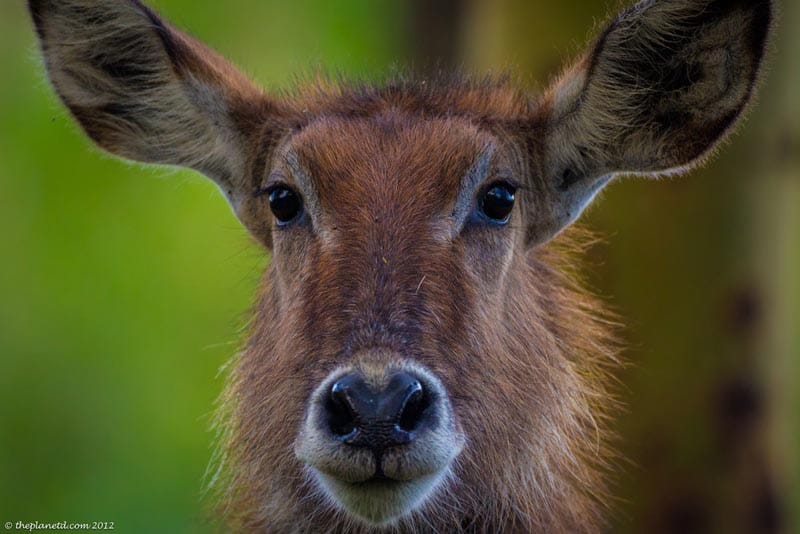
A few minutes later, Dave saw the star attraction in the distance. Stop the truck he cried from behind his giant lens.
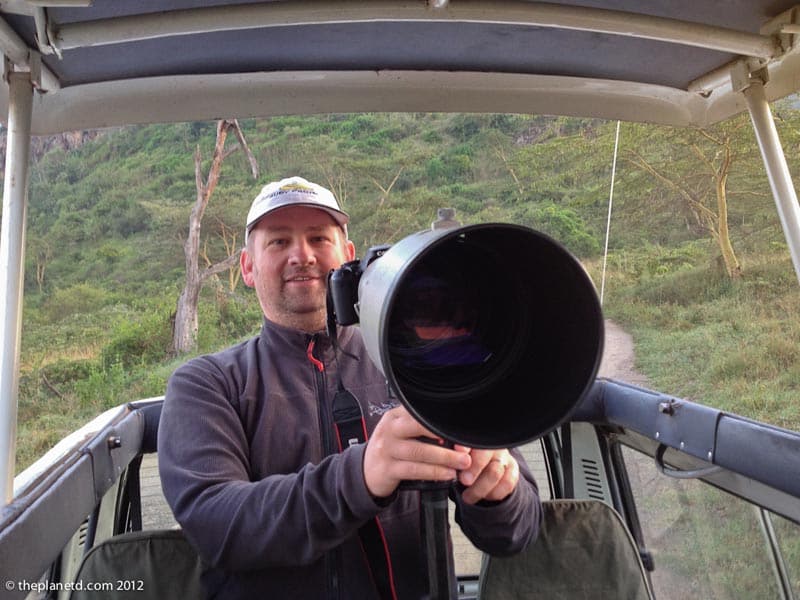
Out in the tall grass next to the forest was a rare black rhino.
Rhinos of Nakuru
It was quietly grazing. We watched in awe as another van zoomed right past it! They had no idea what we just spotted!
Makau told us that the black rhino is more endangered than the white rhino so we felt very privileged to be watching it in it’s natural habitat.
After a short time it disappeared into the forest and we drove on.
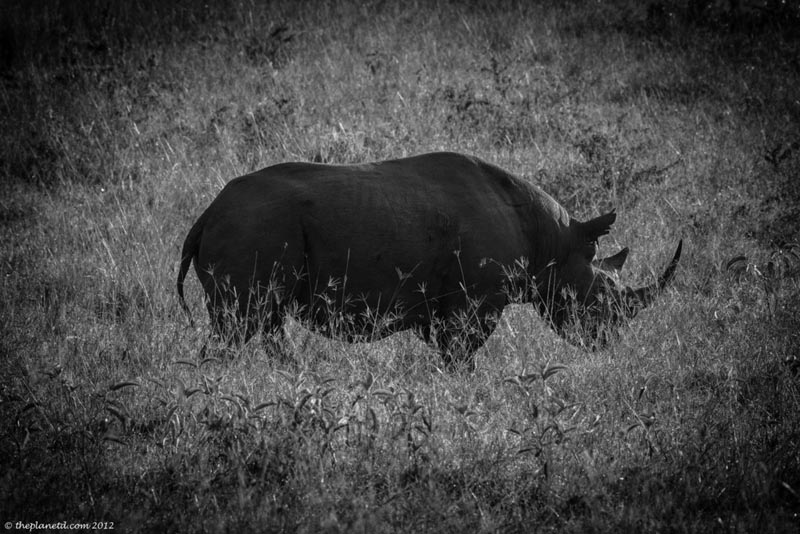
It was less than 5 minutes later that we came upon a group of white rhinos including a baby. Ah, this was where the other van was racing to.
He must have spotted this group the night before and hightailed it to the watering hole for first thing in the morning.
Rehabilitating and Saving the Rhino
We watched these rhinos for quite some time and Makau explained to us that Rhinos aren’t native to Nakuru.
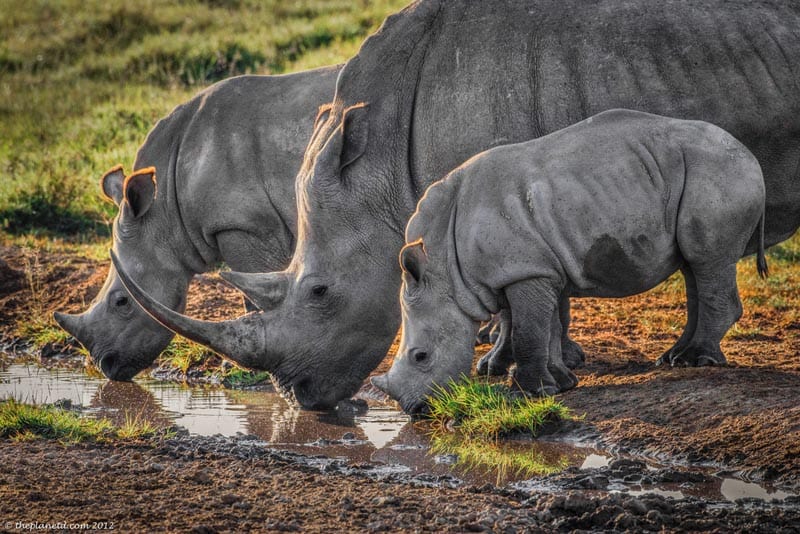
They were brought in as part of a rehabilitation project.
Initially a bird sanctuary famous for the millions of migrating pink flamingos who feed on the water’s algae, Lake Nakuru is the only fenced in park in all of Kenya. It’s not fenced in to keep the wildlife in, but to keep the poachers out.
Poaching is a very real problem for rhinos in Kenya. because they are abundant here in Nakuru, they are very vulnerable.
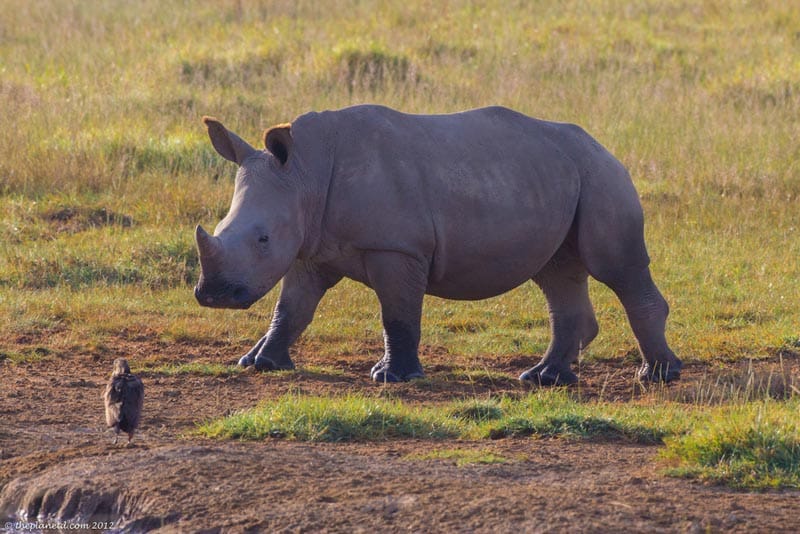
Rhinos are slow to reproduce and have a built in defence mechanism to not have babies if it feels the environment is unsafe. For decades the wildlife of Africa has been decimated by hunters, so for decades, rhinos rarely reproduced.
The Lake Nakuru project is so successful that rhinos are having babies and as their population grows, they’ve been transferred and donated to 23 other parks to help rebuild the rhino numbers in Africa.
It’s an uplifting story and to watch these magnificent creatures, I cannot understand how people can kill them simply for the fibres on their horns. Such a waste.
The Flamingos of Lake Nakuru
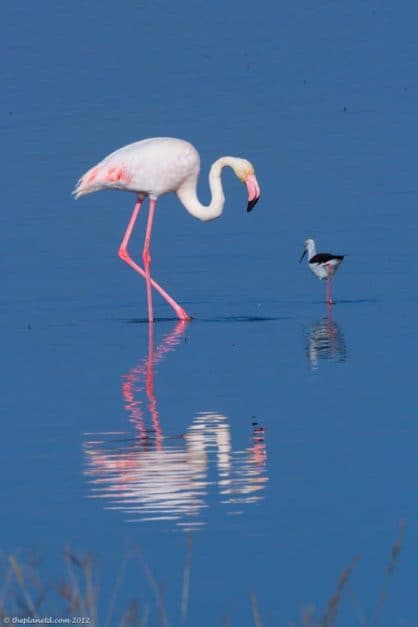
After the Rhinos we moved on to see the flamingos. We just missed the high season where millions of birds call this lake home, but because the rainy season hadn’t quite taken hold, there were still a fair amount of birds, and what a sight it was.
You could see rows of pink lines on the water.
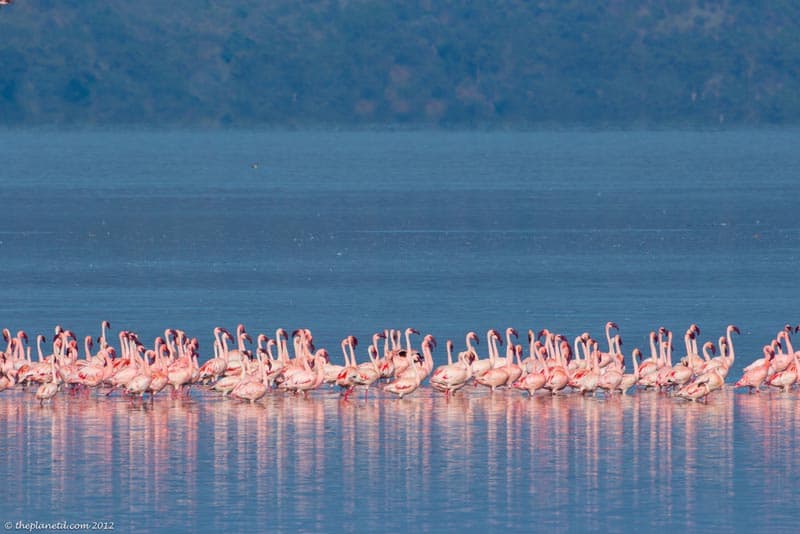
Makau told us that they all stand in a line because they are standing on a sandbar eating rows of algae. As the lake dries out, bird droppings stick around longer creating a more algae on the lake.
The more algae, the more food and therefore more flamingos. That is why it is best to visit in the height of the dry season if you want to see the million flamingo phenomenon.
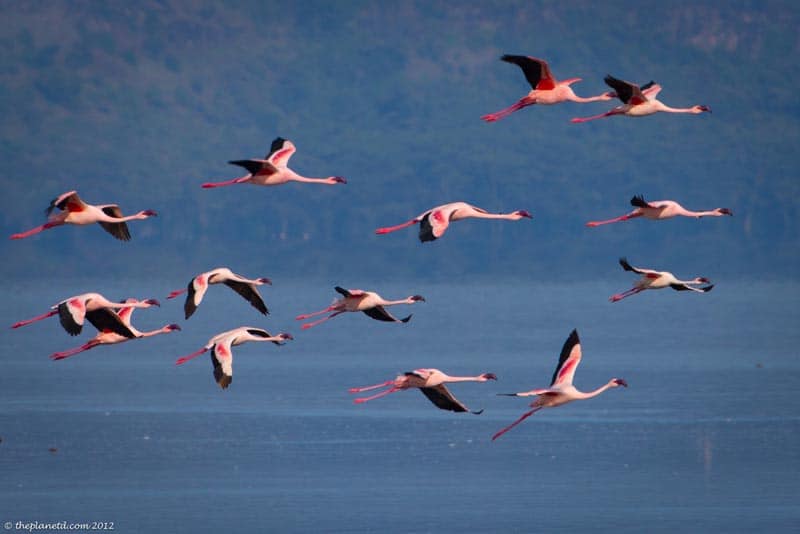
Lake Nakuru is located in the abundant rift valley and when you visit this lake, you have a good chance of spotting all the big wildlife of Africa. We saw giraffes, buffalos, waterbucks and several different types of birds.
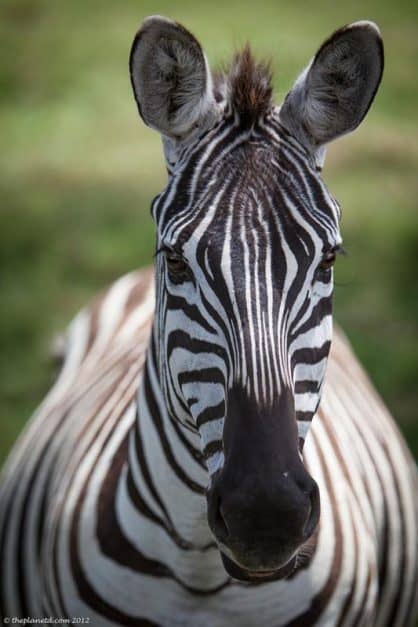
It is worth a stop to add Lake Nakuru to your Safari in Kenya. Many people we met at other parks mentioned that they saw everything but the Rhino. When you visit Lake Nakuru, you are almost guaranteed a chance to see rhinos.
The rest of the Big 5 will be seen on the Masai Mara, but if you want to see them all, Lake Nakuru is a must!
Read More:

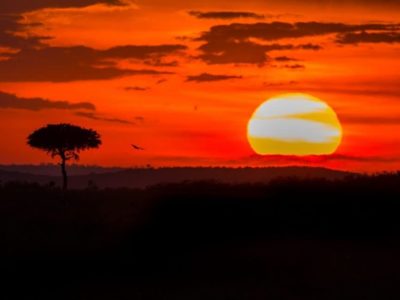
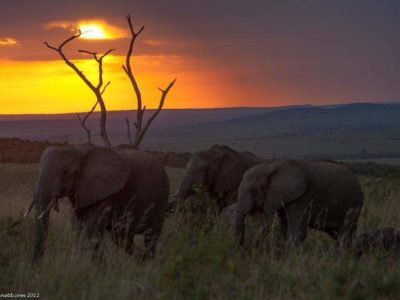
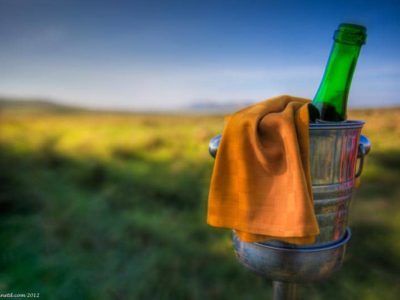
Isn’t a safari exciting?! We loved that feeling of searching for the animals and yelling “STOP”! whenever we saw an animal – big or little. I love the photo of the Columbus Monkey, great shot. Spotting a Black Rhino is definitely a rare thing..we were lucky enough to see one in the Masai Mara as well! Beautiful creature.
Cheers!
That is exactly how I felt on safari. I made it my challenge every day to be the first to spot an animal. it feels so good when you catch a peak of a giraffe hiding in the bushes and have your guide stop, back up and see it loud and clear. Dave was the best at spotting, but I had my moments too. Lucky you to see a black rhino in the Masai mara. I guess they aren’t around in those parts during the time of year we were there. We didn’t hear of anyone seeing a rhino in the Mara. I’m so glad we stopped at Lake Nakuru first.
Spectacular photographs!!! Its look like a adventure national park tour.
Thanks! Glad we could take you on a little tour of Kenya.
Wow and double-wow! That is awesome, awesome pictures! *whistles admiring* What a nature experience that must have been! Truly magnificent… Something I can only dream about… *sigh* Thanks for sharing and make my day like this!
Thank you and I am so glad that we could make your day. It was a pretty amazing experience, one that we waited a long time for ourselves. We were in Africa in 2008, but didn’t see a lot of wildlife then, it was pretty special to see it now.
It can be so frustrating trying to spot wildlife. We spent a morning trying to track a leopard who kept “teasing” us but never showed his face. Great photos. Love the rhino and the one of the flamingos flying especially.
You said it Laurel. It can be tiring trying to keep an eye out. I don’t know how guides do it day in day out. I enjoyed making it my mission to see something before Dave and Makau. I’d look out in the wild with fierce intensity, but Dave and Makau always spotted everything before I did 😉
Excellent shots as always Dave! Love that you spotted the rare Black Rhino before anyone else.
Good luck finding some big kitties! 😀
Dave is so good at spotting wildlife. I’d be concentrating so hard and still couldn’t beat Dave to the punch.